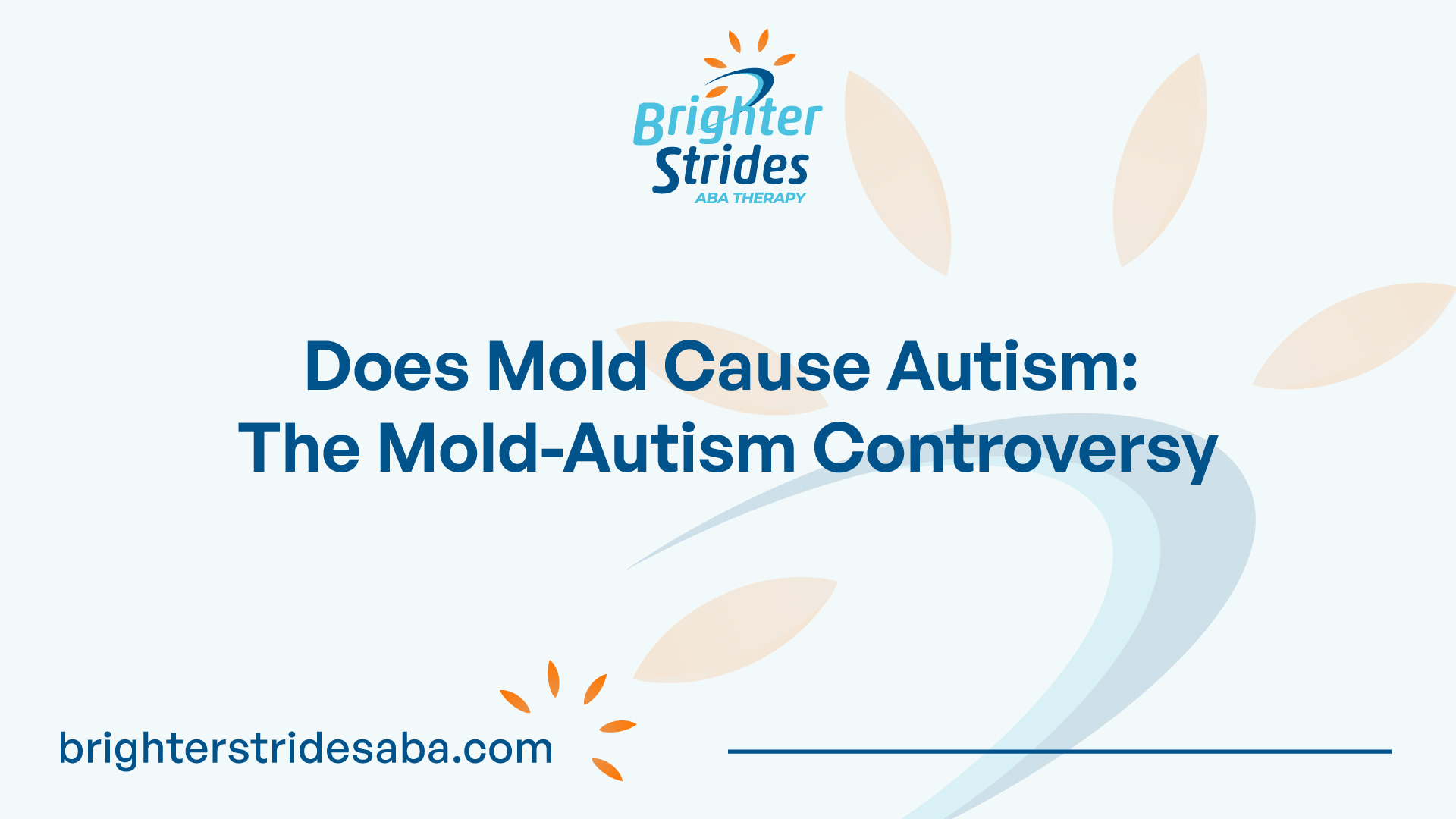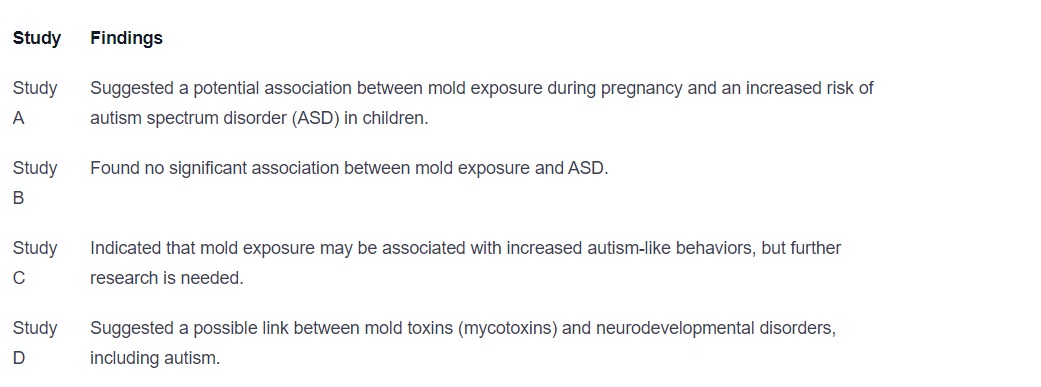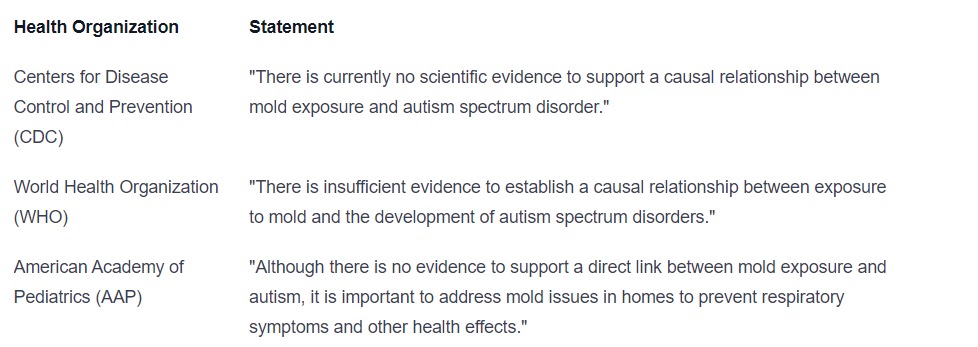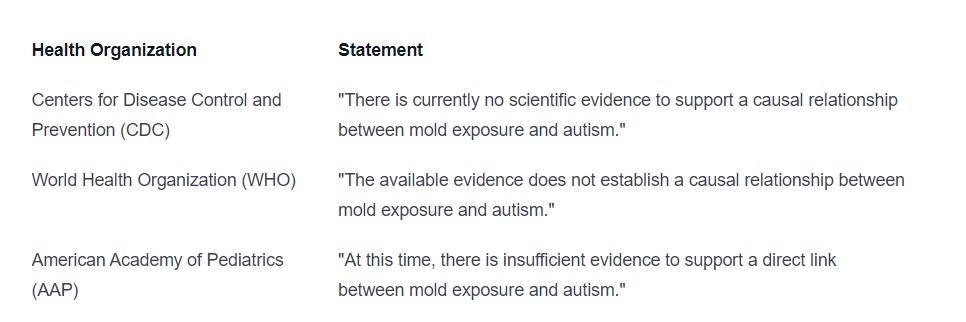The Mold-Autism Controversy
The potential link between mold exposure and autism has been a subject of debate and controversy. In this section, we will explore the mold-autism connection and gain a better understanding of Autism Spectrum Disorder (ASD).

Introduction to the Mold-Autism Connection
The idea that mold exposure may contribute to the development or exacerbation of autism has sparked interest and concern among researchers and the public alike. Some individuals believe that exposure to certain types of mold toxins, known as Mycotoxins, could potentially impact brain development and increase the risk of autism. However, it is important to examine the available evidence before drawing any conclusions.
Examining the Evidence
When it comes to the potential connection between mold exposure and autism, it is essential to carefully examine the available evidence. This section will delve into the research surrounding mold exposure and its potential effects on autism.
Mold Exposure and Health Effects
Exposure to mold has been associated with various health effects, such as respiratory symptoms, allergies, and asthma. Mold spores, when inhaled or ingested, can trigger inflammatory responses in susceptible individuals. However, the direct link between mold exposure and autism remains a topic of ongoing research and debate.
Research on Mold and Autism
Several studies have attempted to investigate the relationship between mold exposure and autism. However, it is important to note that the current body of research has limitations and conflicting findings.

These studies provide insights into the complex relationship between mold exposure and autism, but it is crucial to interpret the findings with caution due to the varying methodologies, sample sizes, and other factors that can influence the results.
Limitations and Conflicting Findings
The research on mold exposure and autism has several limitations and conflicting findings, which contribute to the ongoing controversy surrounding this topic. Some limitations include:
- Lack of consistent measurement methods for mold exposure.
- Difficulty in establishing a causal relationship due to the presence of confounding factors.
- Variability in study designs, making it challenging to draw definitive conclusions.
Conflicting findings further complicate the understanding of this connection. While some studies suggest a potential association between mold exposure and autism, others find no significant link. These inconsistencies highlight the need for further research to clarify the relationship between mold exposure and autism spectrum disorder.
In summary, while there have been studies examining the potential connection between mold exposure and autism, the evidence is limited and contradictory. More research is needed to better understand the relationship, including potential mechanisms and contributing factors. It is advisable to consult with healthcare professionals and follow the recommendations of health organizations regarding mold prevention and remediation.
Potential Mechanisms
Understanding the potential mechanisms behind the relationship between mold exposure and autism is a complex task. While research is ongoing, several theories have been proposed to explain how mold may contribute to the development or exacerbation of Autism Spectrum Disorder (ASD). This section explores some of these potential mechanisms.
Neurotoxicity of Mold
One hypothesis suggests that certain compounds released by molds, known as mycotoxins, may have neurotoxic effects on the developing brain. Mycotoxins can be present in indoor environments where mold growth occurs. Animal studies have shown that exposure to mycotoxins can lead to neurobehavioral changes and alterations in brain structure. However, the direct link between mycotoxin exposure and autism in humans remains unclear.
Immune System Response
Another potential mechanism involves the immune system’s response to mold exposure. It is hypothesized that the immune system’s reaction to mold and its components could trigger inflammation and immune dysfunction, which may play a role in the development or exacerbation of ASD. Some studies have found evidence of immune system abnormalities in individuals with ASD, but the connection to mold exposure is still being explored.
Other Factors to Consider
While mold exposure is a factor of interest in the mold-autism controversy, it is essential to consider other factors that may contribute to the development of ASD. Autism is a complex disorder with a multifactorial etiology. Genetic predisposition, prenatal and early-life environmental exposures, and various other factors are known to influence the risk of ASD. It is crucial to take a comprehensive approach when examining the potential causes of autism, including mold exposure, to gain a better understanding of its complexity.
Understanding the potential mechanisms of how mold may affect autism is an ongoing area of research. It is important to note that the current evidence is limited and conflicting. More studies are needed to establish a clearer understanding of the relationship between mold exposure and autism. In the meantime, it is advisable to follow the guidance of health organizations and take measures to prevent and remediate mold in indoor environments to promote overall well-being.
Expert Opinions and Guidelines
When it comes to the mold-autism controversy, it is important to consider the opinions and guidelines provided by health organizations. These organizations play a crucial role in evaluating scientific evidence and providing recommendations to the public. Let’s take a closer look at the statements from health organizations and their recommendations for mold prevention and remediation.
Statements from Health Organizations
Several reputable health organizations have examined the mold-autism connection and have provided statements regarding this controversial topic. While the consensus is that there is no direct causal relationship between mold exposure and autism, these organizations acknowledge the potential health risks associated with mold and the need for further research. Here are some key statements from health organizations:

These statements highlight the consensus among health organizations that the evidence does not support a direct connection between mold exposure and autism, but they emphasize the importance of addressing mold issues for overall health.
Recommendations for Mold Prevention and Remediation
Health organizations provide guidelines and recommendations for preventing and remedying mold issues in homes and buildings to ensure a healthy environment. While the focus is not specifically on autism prevention, these recommendations aim to minimize potential health risks associated with mold exposure. Here are some general recommendations:
- Control moisture: Preventing excessive moisture is key to mold prevention. Fix leaks, control humidity levels, and ensure proper ventilation in areas prone to moisture buildup like bathrooms, kitchens, and basements.
- Promptly address water damage: Address any water damage, such as leaks or floods, promptly to prevent mold growth. Dry affected areas within 24-48 hours and consider professional assistance for extensive damage.
- Proper ventilation: Ensure good airflow by using exhaust fans, opening windows, and using dehumidifiers to reduce moisture and prevent mold growth.
- Regular cleaning: Regularly clean and maintain areas prone to mold growth, such as bathrooms and kitchens. Use mold-resistant products and clean visible mold promptly using appropriate cleaning techniques.
- Professional remediation: In cases of extensive mold growth or if you are particularly sensitive to mold, consider seeking professional mold remediation services to ensure proper removal and prevention.
It’s important to note that these recommendations are general guidelines for mold prevention and remediation and are not specific to autism prevention.
By considering the statements from health organizations and following their recommendations for mold prevention and remediation, individuals can maintain a healthy environment and reduce potential health risks associated with mold exposure, regardless of the mold-autism controversy.
Expert Opinions and Guidelines
When it comes to the mold-autism controversy, it is essential to consider the opinions and guidelines provided by health organizations and experts in the field. Let’s explore what these experts have to say about the connection between mold exposure and autism.
Statements from Health Organizations
Health organizations have extensively examined the mold-autism link and have provided statements based on their findings. While there is ongoing research in this area, it is important to note that no major health organization has definitively established a causal relationship between mold exposure and autism. Here are a few statements from reputable health organizations:

These statements highlight the consensus among health organizations that more research is needed to establish a definitive connection between mold exposure and autism.
Recommendations for Mold Prevention and Remediation
While the mold-autism controversy is still being studied, experts do agree on the importance of preventing and remedying mold-related issues for overall health and well-being. Here are some general recommendations provided by experts in mold prevention and remediation:
- Maintain proper ventilation: Ensure that your home has adequate ventilation to prevent moisture buildup, which can contribute to mold growth.
- Address water leaks promptly: Fix any water leaks in your home as soon as possible to prevent moisture from accumulating.
- Control humidity levels: Use dehumidifiers in damp areas of your home to maintain optimal humidity levels, typically between 30% and 50%.
- Ensure proper insulation: Properly insulate your home to prevent condensation and moisture buildup.
- Clean and dry water-damaged areas: If you experience water damage, clean and dry the affected areas within 24-48 hours to prevent mold growth.
- Seek professional help: If you suspect mold growth in your home, consult with professionals experienced in mold inspection, testing, and remediation.
By following these recommendations, you can help minimize the risk of mold-related issues in your home and promote a healthier living environment.
While the mold-autism controversy remains a topic of interest, it is important to rely on the consensus of health organizations and expert opinions. As of now, there is no definitive evidence to support a causal relationship between mold exposure and autism. However, it is always prudent to take appropriate measures to prevent and address mold-related issues for the overall well-being of your home and family.
Types of Mold and Health Effects
Mold is a type of fungus that can grow in various indoor and outdoor environments. There are many different types of mold, each with its unique characteristics and potential health effects on humans.
Common Types of Indoor Mold
Some common types of indoor mold include:
- Stachybotrys Chartarum: Also known as “Black Mold,” this type of mold is often associated with water damage and can produce mycotoxins that may have harmful health effects.
- Aspergillus: This type of mold is commonly found in damp areas like bathrooms, kitchens, and basements. It can cause respiratory symptoms and allergies.
- Cladosporium: This type of mold is often found on damp surfaces such as wood or fabrics. It can cause respiratory symptoms, skin irritation, and allergies.
- Penicillium: This type of mold is commonly found in areas with water damage or high humidity levels. It can cause respiratory symptoms, allergies, and asthma.
Health Effects of Mold Exposure
Exposure to mold can lead to various health effects depending on the individual’s sensitivity, the amount and duration of exposure, and the type of mold present. Some common health effects associated with mold exposure include:
- Respiratory symptoms: Exposure to certain molds can trigger respiratory symptoms such as coughing, wheezing, shortness of breath, and chest tightness.
- Allergies: Some molds can cause allergic reactions in susceptible individuals. Symptoms may include sneezing, runny nose, itchy eyes or skin, and hives.
- Asthma: Exposure to molds may worsen asthma symptoms in individuals with pre-existing asthma.
- Infections: In rare cases, some types of molds may cause infections in people with weakened immune systems.
It is important to note that not all molds are harmful, and the health effects of mold exposure can vary widely depending on several factors. However, it is always prudent to take measures to prevent and remediate mold growth in indoor environments.
Conclusion
In conclusion, the mold-autism controversy is an ongoing area of research, and while there is no definitive evidence to support a causal relationship between mold exposure and autism, it is essential to take appropriate measures to prevent and remediate mold growth in indoor environments for overall health and well-being.
By following the recommendations of health organizations and experts in mold prevention and remediation, individuals can minimize potential health risks associated with mold exposure. Additionally, it is crucial to consider multiple factors that may contribute to the development or exacerbation of autism spectrum disorder, including genetic predisposition, prenatal and early-life environmental exposures, and other factors.
As research continues in this area, it is important to remain informed about the potential risks associated with mold exposure while taking a comprehensive approach to understanding the complex etiology of autism.
Sources
- https://www.ncbi.nlm.nih.gov/pmc/articles/PMC6061869/
- https://www.cdc.gov/mold/faqs.html
- https://www.epa.gov/mold/mold-and-health
- https://www.who.int/news-room/fact-sheets/detail/moulds-in-indoor-environments
- https://www.autismspeaks.org/expert-opinion/no-link-between-mold-and-autism-spectrum-disorders
- https://www.aafa.org/mold-allergy/
- https://medlineplus.gov/ency/article/007083.html

 We've just released an article!
Check out our blog!
We've just released an article!
Check out our blog!



